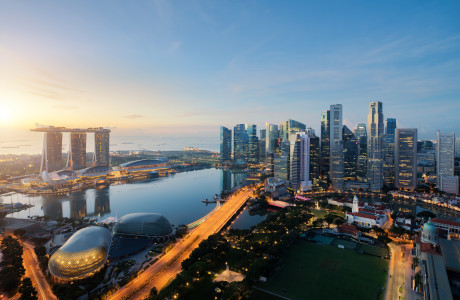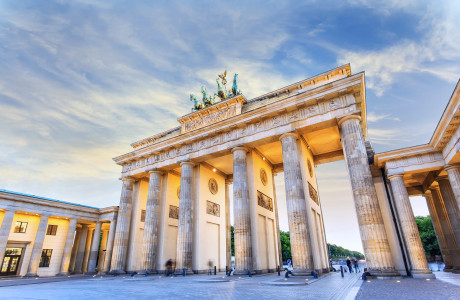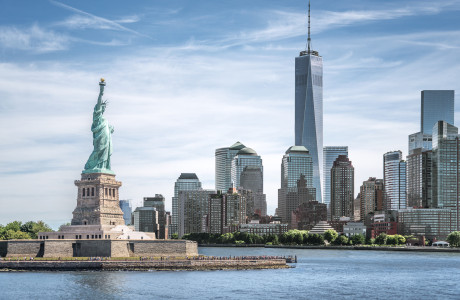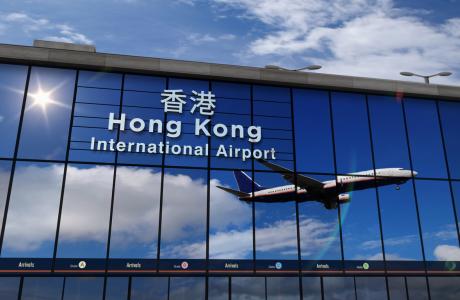
Hong Kong International Airport: from Kai Tak to Chek Lap Kok
Whether in the present or the past, Hong Kong's airport has always been spectacular. Until its closure on July 6, 1998, Kai Tak Airport was known as Hong Kong International Airport, particularly famous for its nerve-wracking approach maneuvers. On the same day, its successor, Chek Lap Kok, took over as Hong Kong's airport and has since risen to become the world's largest cargo airport and one of the largest passenger airports globally. In the following article, you'll learn more about the two airports and why Hong Kong is worth visiting.
Contents
Overview of Hong Kong's Airports
Hong Kong International Airport is the only commercially relevant airport in Hong Kong. While there are others, such as the Shek Kong Airfield, they are mainly used for private flights. Even though two airports have held the title of Hong Kong International Airport, they were never active simultaneously but were immediately succeeded in 1998. The reasons were the high passenger volume that could no longer be handled and the location of the old Kai Tak Airport. The approach was very dangerous due to surrounding hills, and it was located centrally in the city due to Hong Kong's expansion over the years, necessitating a night flight ban. Today, Kai Tak is partially used as a park and partially as the Kai Tak Cruise Terminal, Hong Kong's central docking point for cruise ships. The airplanes are gone, but the tourists have, so to speak, remained.
Chek Lap Kok: The Airport Island
Today's Hong Kong International Airport Chek Lap Kok can be considered one of the most ambitious airport projects worldwide. Its success proves the planners right, as it is one of the largest and most important airports in many respects.
Rapid Construction on an Artificial Island
The challenges for the new Hong Kong International Airport were not least due to the tight construction schedule, which was influenced by the political situation at the time. Until 1997, Hong Kong was under British administration, but the return to China was already decided when construction began in 1991. It was also agreed that the airport should be as completed as possible by then. The problem: A largely artificial island first had to be created.
The existing island of Chek Lap Kok was leveled from a height of up to 100 m to a consistent 7 m above sea level. The excavated earth was used to expand the landmass, which grew more than threefold: More than 9 km² was reclaimed from the sea. The total area of nearly 12.5 km² was then completely built with the Hong Kong International Airport. Since then, additional land reclamation measures and expansions have been carried out, and further ones are already planned.
Passenger and Cargo Traffic
The expansion of Chek Lap Kok is due to the high utilization of the airport. It serves as a first point of contact in China for many tourists and is one of the world's most important hubs; about half of the world's population can be reached from here in under five hours of flight time. In terms of total passenger numbers, it ranks behind the largest European airports like Heathrow in London or Charles de Gaulle in Paris, but ahead of Germany's largest airport in Frankfurt and continues to grow.
In terms of cargo, however, Hong Kong International Airport is unrivaled: Except for a brief decline during the coronavirus pandemic, Chek Lap Kok has been the world's largest cargo airport since 2010. Over 5 million tons of cargo are handled here annually. The DHL hub alone processes around 75,000 parcels and packages per hour.
Kai Tak: Approach via Checkerboard Hill
The old Hong Kong Kai Tak Airport is famous and indeed notorious. As with Chek Lap Kok, its location is particularly noteworthy.
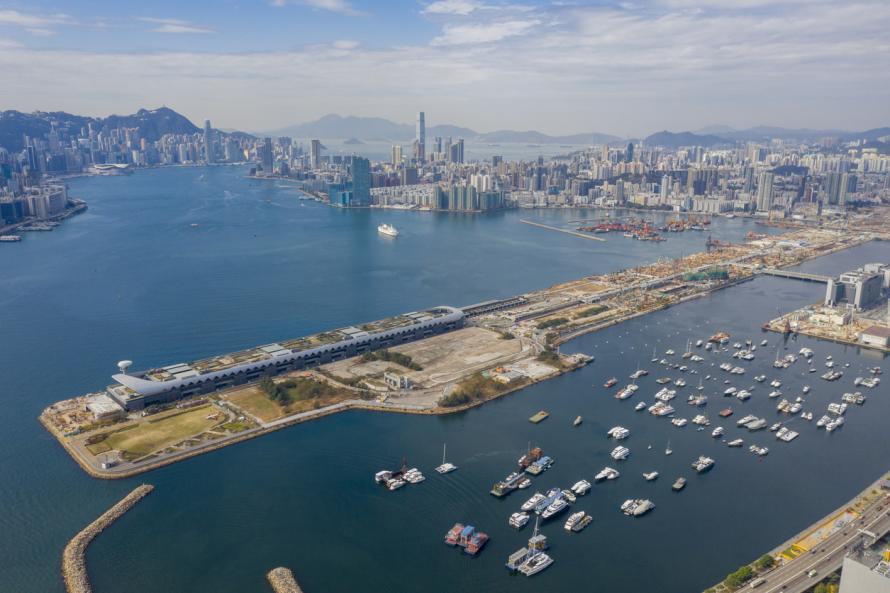
Water, Mountains, and Apartments
Surrounded by water on three sides, Kai Tak offered only a single runway. In itself, this was not a problem, but the situation was exacerbated by additional geographical conditions. Hills over 500 meters high rose steeply on several sides around the then Hong Kong International Airport. Overflying them was impossible as it would have required too steep a landing maneuver. The only approach path was therefore over the water from the south. Even here, a straight approach was not possible: Instead, a sharp right turn had to be made at low altitude.
This right turn was marked by a large red-orange checkerboard pattern on a hill in the approach path – the so-called Checkerboard Hill. Once the pilots could see the pattern, they began the turn. They were already so close to the surrounding apartment complexes of the densely populated Kowloon district that passengers allegedly could recognize the TV programs of the residents. For the cockpit crew, the additional challenge was that instrument flight was not possible. The landing was instead performed visually.
Kai Tak Airport Today
Since the Hong Kong airport was considered dangerous, expansion possibilities were practically nonexistent, and the dense overflying of residential areas made a night flight ban essential, Kai Tak was decommissioned as mentioned. Initially, the existing buildings were used for various purposes, ranging from government offices to car dealerships to mini-golf courses and arcades. It was not until the 2000s that the buildings were finally demolished.
After longer development and construction phases, large parts of the former site are now used differently. There are green spaces, a children's hospital, several public housing projects, and a metro station. For tourists, the Kai Tak Cruise Terminal is also of interest, the docking point for cruise ships in Hong Kong. The Kai Tak Sports Park is still under construction and will be the city's largest stadium with 50,000 seats.
By the way: Although the approach to Kai Tak was demanding, it was not considered the most dangerous airport in the world. That dubious honor goes to another airport in Asia, Lukla Airport in Nepal, near the base camp of Mount Everest.
Sights in Hong Kong
As a city with an extraordinary history and strong multicultural influences, Hong Kong has a lot to offer. The geographical location with impressive hills right by the sea also provides an exciting mix. Among other things, you should not miss the following:
Victoria Peak
This hill offers an excellent view over large parts of Hong Kong. You can reach the over 500-meter-high summit on your own or with the Peak Tram, from which you can look down on Victoria Harbour, the city's natural harbor.
Street Food, Restaurants, and Nightlife
Hong Kong is an extremely busy city. Historic buildings and the most modern architecture are densely packed together here. In the numerous side streets, you will find charming street food stalls, restaurants, and bars that offer a colorful variety for every taste day and night.
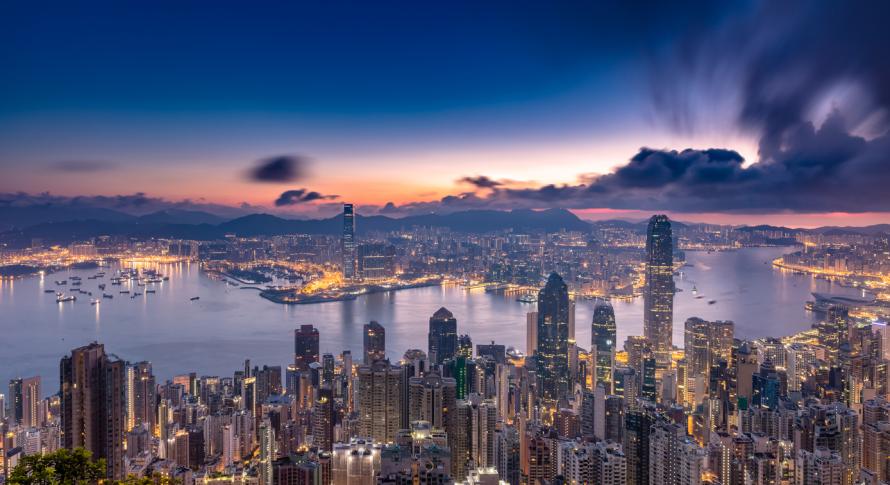
Lantau Island
Lantau Island offers a more natural and rural experience. It belongs to Hong Kong's administrative area, but there is little sign of the metropolis here. Besides the breathtaking nature, there are several tranquil villages to explore. A highlight is also a 34-meter-high Buddha statue.
Of course, Hong Kong has much more to offer. Therefore, we highly recommend taking some time to explore when you fly to Hong Kong International Airport. We wish you a pleasant journey!

